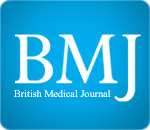via PLoS ONE, by Emily A. Arnold, Patrick Hazelton, Tim Lane, Katerina A. Christopoulos, Gabriel R. Galindo, Wayne T. Steward, Stephen F. Morin
ABSTRAST
A recent clinical trial demonstrated that a daily dose tenofovir disoproxil fumarate and emtricitabrine (TDF-FTC) can reduce HIV acquisition among men who have sex with men (MSM) and transgender (TG) women by 44%, and up to 90% if taken daily. We explored how medical and service providers understand research results and plan to develop clinical protocols to prescribe, support and monitor adherence for patients on PrEP in the United States.
Methods
Using referrals from our community collaborators and snowball sampling, we recruited 22 healthcare providers in San Francisco, Oakland, and Los Angeles for in-depth interviews from May-December 2011. The providers included primary care physicians seeing high numbers of MSM and TG women, HIV specialists, community health clinic providers, and public health officials. We analyzed interviews thematically to produce recommendations for setting policy around implementing PrEP. Interview topics included: assessing clinician impressions of PrEP and CDC guidance, considerations of cost, office capacity, dosing schedules, and following patients over time.
Results
Little or no demand for PrEP from patients was reported at the time of the interviews. Providers did not agree on the most appropriate patients for PrEP and believed that current models of care, which do not involve routine frequent office visits, were not well suited for prescribing PrEP. Providers detailed the need to build capacity and were concerned about monitoring side effects and adherence. PrEP was seen as potentially having impact on the epidemic but providers also noted that community education campaigns needed to be tailored to effectively reach specific vulnerable populations.
Conclusions
While PrEP may be a novel and clinically compelling prevention intervention for MSM and TG women, it raises a number of important implementation challenges that would need to be addressed. Nonetheless, most providers expressed optimism that they eventually could prescribe and monitor PrEP in their practice.
Read the full text here.
[Content that is linked from other sources is for informational purposes and should not construe a Mapping Pathways position. Please look for us on Facebook here www.facebook.com/MappingPathways and you can follow us on Twitter @mappingpathways as well.]
ABSTRAST
A recent clinical trial demonstrated that a daily dose tenofovir disoproxil fumarate and emtricitabrine (TDF-FTC) can reduce HIV acquisition among men who have sex with men (MSM) and transgender (TG) women by 44%, and up to 90% if taken daily. We explored how medical and service providers understand research results and plan to develop clinical protocols to prescribe, support and monitor adherence for patients on PrEP in the United States.
Methods
Using referrals from our community collaborators and snowball sampling, we recruited 22 healthcare providers in San Francisco, Oakland, and Los Angeles for in-depth interviews from May-December 2011. The providers included primary care physicians seeing high numbers of MSM and TG women, HIV specialists, community health clinic providers, and public health officials. We analyzed interviews thematically to produce recommendations for setting policy around implementing PrEP. Interview topics included: assessing clinician impressions of PrEP and CDC guidance, considerations of cost, office capacity, dosing schedules, and following patients over time.
Results
Little or no demand for PrEP from patients was reported at the time of the interviews. Providers did not agree on the most appropriate patients for PrEP and believed that current models of care, which do not involve routine frequent office visits, were not well suited for prescribing PrEP. Providers detailed the need to build capacity and were concerned about monitoring side effects and adherence. PrEP was seen as potentially having impact on the epidemic but providers also noted that community education campaigns needed to be tailored to effectively reach specific vulnerable populations.
Conclusions
While PrEP may be a novel and clinically compelling prevention intervention for MSM and TG women, it raises a number of important implementation challenges that would need to be addressed. Nonetheless, most providers expressed optimism that they eventually could prescribe and monitor PrEP in their practice.
Read the full text here.
[Content that is linked from other sources is for informational purposes and should not construe a Mapping Pathways position. Please look for us on Facebook here www.facebook.com/MappingPathways and you can follow us on Twitter @mappingpathways as well.]












